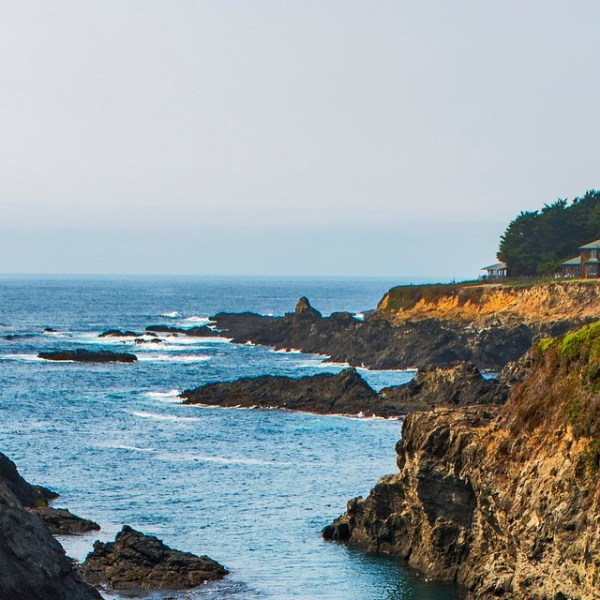FOR IMMEDIATE RELEASE
March 12, 2024
Resources for Media: Please see here for the report, a media summary, photos, and video.
SACRAMENTO, CA – California State Parks Foundation released a first-of-its-kind report highlighting climate change's impact on state parks and the unique role that parks play in fighting this crisis.
The report “Building a Climate-Resilient California State Park System: Preserving Parks for Future Generations,” offers key legislative recommendations that California’s leaders should act on to both ensure the protection of state parks and maximize their contribution to the state’s climate efforts.
“California’s most beautiful and iconic lands are at risk from the climate crisis, and time is running out to protect them,” said Rachel Norton, Executive Director of California State Parks Foundation. “This unprecedented threat requires immediate and bold action to create a climate-resilient state park system that will endure for future generations. If we follow the recommendations outlined in our new report, we can both protect our state parks and mitigate the effects of climate change across California.”
California’s state parks make up almost one-quarter of California’s coastline, are home to more than 150,000 acres of coastal redwoods, and preserve a wide range of ecosystems, from coastal wetlands to inland deserts to every major forest ecosystem in every region of the state. These cherished places are now increasingly threatened by climate change. State parks are burning in more severe wildfires, coastal parks are being eroded by rising sea levels and intensifying storms, and endangered species that call state parks home are losing vital habitat. A climate-resilient state park can prepare for, adapt to, and recover from climate impacts.
“We are seeing the increasing effects of the climate crisis up close and personal in state parks,” said Claire Schlotterbeck, Executive Director of Hills For Everyone, a partner organization working in Chino Hills State Park. “In our region, too many fires have burned through our park, allowing opportunistic invasive species to take over the burn area and displace local wildlife. The recommendations outlined in this report would help us protect Chino Hills for its own innate value but also as a key component of climate resilience in California.”
Informed by science and stakeholder input, California State Parks Foundation outlined in its report seven short- and long-term recommendations for building climate-resilient parks.
Examples of these recommendations include:
-
Funding a cohesive strategy to prepare state parks for rising sea levels. By 2100, up to 75% of California’s beaches may vanish due to sea level rise. As the manager of almost one-quarter of California’s coastline, California State Parks is on the front line of sea level rise adaptation. Unprecedented storms are also causing millions of dollars in damage to coastal parks. These storms highlight the exposure of coastal parks to sea level rise and other coastal threats that must be addressed.
-
Extending funding to address wildfire and forest resilience in California’s state parks. Warmer and drier conditions, coupled with 150 years of fire suppression, have led to an increase in the frequency, size, and severity of wildfires in the state. California State Parks previously used one-time funding to create a Wildfire and Forest Resilience Program. However, this funding expires in fiscal year 2027–28, and it will take decades to restore healthy, wildfire-resilient landscapes.
-
Fund a robust acquisition program to expand existing state parks and create new state parks. California’s astounding biodiversity is under threat from habitat loss, ecosystem degradation, and climate change. California State Parks can play a key role by acquiring, restoring, and stewarding parklands. New parks would also help communities prepare for extreme heat events and help ensure equitable access to nature in urban areas and for underserved communities that are disproportionately affected by climate change.
-
Make state parks count in statewide climate goals. California founded the 30x30 initiative to protect and restore the state’s biodiversity by conserving 30% of California’s lands and coastal waters by 2030. California must prioritize state parks more clearly in the 30x30 framework for their role in stewardship, conservation, and recreational opportunities. Doing so will allow California State Parks greater access to future investments in conservation and stewardship activities across California.
“California State Parks has effectively used its limited resources to increase climate resilience and to develop strategies to build a climate-resilient state park system, but we need more,” continued Norton. “We need policies that prioritize state parks. We need the permanent staff to carry out these policies and adequate, sustained funding. We need climate resilience built into every aspect of park management, from ecosystem stewardship to building climate-smart infrastructure to public outreach and education. State parks can be a powerful tool in fighting the climate crisis, but we need to make it happen.”
“We stand firmly behind the California State Parks Foundation's climate recommendations,” said John Roney, Sugarloaf Ridge State Park Park Manager with the Sonoma Ecology Center. “This document is more than just a report; it's a call to action for all Californians and for our leaders. It lays out a clear path to safeguard our state parks from the ravages of climate change, ensuring they remain a source of joy and inspiration for everyone. By embracing the report’s recommendations, we can come together to protect these precious resources for future generations.”
The Sonoma Ecology Center has seen the effects of climate change firsthand in its stewardship of Sugarloaf Ridge State Park. The Nuns Fire in 2017 and the Glass Fire in 2020 burned over 98% of the park, with half of the area torched twice. Intense rains further battered the park, damaging roads and trails and underscoring the threat of wildfires and extreme weather for Sugarloaf and California’s other state parks.
The new report is the first to comprehensively look at climate impacts and climate resilience in state parks and to place parks at the center of the discussion. Several key partners contributed important expertise and insights into this report including: Parks California, Sempervirens Fund, Save the Redwoods League, Tahoe Conservancy, Climate Resolve, and Central Coast State Parks Association.
